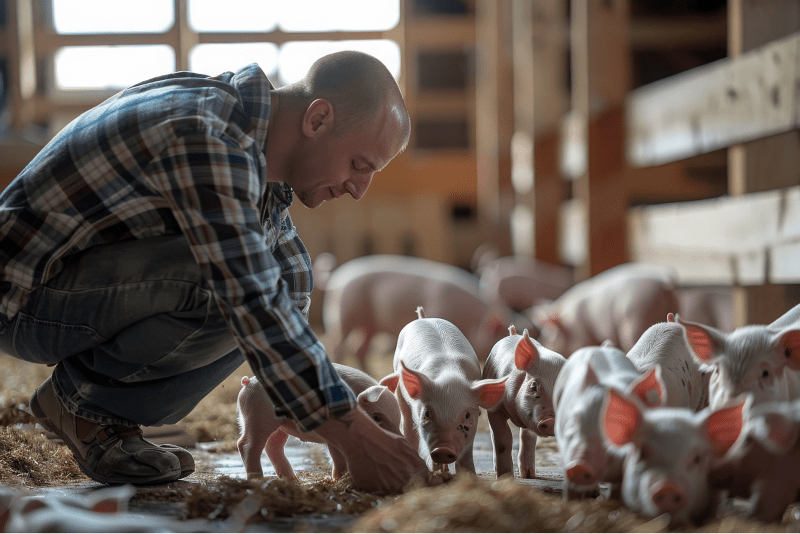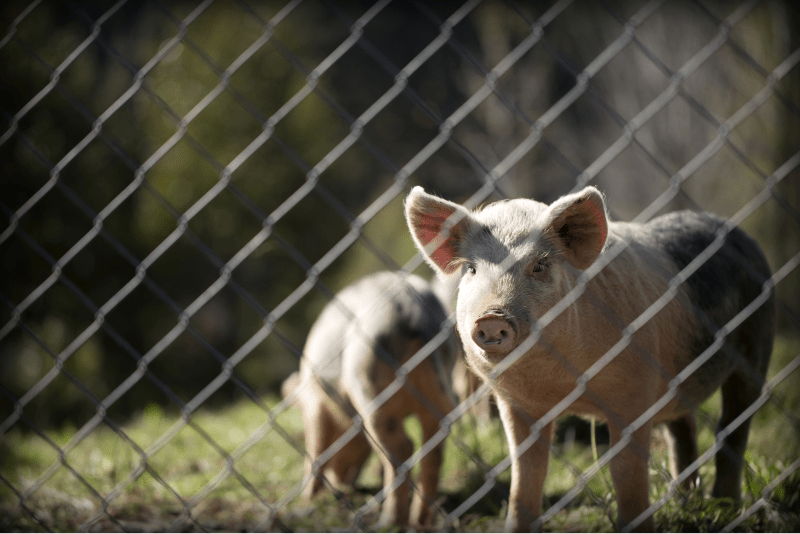Improvements to Pig Drinking Equipment in Livestock Breeding and Management Equipment
The improvement of pig drinking equipment should focus on the four core goals of precision supply, hygiene and safety, energy conservation and consumption reduction, and intelligent management. It should integrate the physiological needs of pigs at different growth stages (piglets, fattening pigs, sows) and the scale of farms, and conduct systematic optimization from the dimensions of materials, structure, functions, and system integration. The specific improvement directions are as follows:
1. Improvement of Core Performance and Structure: Adapting to Needs and Enhancing Basic Experience
1.1 Stage-specific Precision Adaptation Design
For piglets: Replace the traditional single drinker with an adjustable-speed nipple drinker. By adjusting the water flow rate (0.5-1L/min), it prevents piglets from choking or insufficient water intake due to slow water flow. Meanwhile, a constant temperature heating module is added (maintaining water temperature at 15-20℃ in winter) to solve the problem that piglets are sensitive to cold water and prone to diarrhea.
For fattening pigs/sows: Adopt a high-flow duckbill drinker (flow rate 2-3L/min) equipped with a rotatable bracket, which adapts to different drinking postures of pigs (standing, bowing their heads) and reduces water waste during drinking (the waste rate of traditional equipment can reach 30%, which is reduced to below 10% after improvement).
1.2 Material and Hygiene Upgrade
Core components (drinkers, water pipes) abandon ordinary plastic and use food-grade 316 stainless steel or antibacterial PP material. The former is resistant to acid and alkali corrosion (adapting to the environment with residual acidic creep feed), while the latter has an antibacterial coating to reduce the growth of microorganisms such as Escherichia coli and Salmonella.
Add an automatic sewage discharge structure: The bottom of the drinker is designed with an inclined diversion groove, and the end is connected to a timed sewage valve (automatically opened once every 4 hours) to timely discharge precipitated impurities and stagnant water and avoid "secondary pollution".

2. Intelligent and Automatic Improvement: Reducing Costs, Increasing Efficiency, and Realizing Refined Management
2.1 Intelligent Monitoring and Precision Supply
Integrate Internet of Things (IoT) sensors: Embed flow sensors in the drinker to record the water consumption of individual pigs in real time (data is synchronized to the breeding management system). Early warning of diseases (such as swine fever, diarrhea) or stress responses is realized through abnormal water consumption (e.g., a sudden drop of 50%), achieving "early detection and early intervention".
Link with water quality monitoring module: Real-time detection of water temperature, pH value, and residual chlorine content. When the water quality is not up to standard (e.g., pH < 6 or > 8.5), the water supply is automatically cut off and an alarm is given to ensure drinking water safety.
2.2 Energy Conservation and Automatic Control
Replace the traditional constant-pressure water supply with a frequency conversion constant-pressure system: Automatically adjust the water supply pressure according to the number of pigs (counted by infrared sensors), avoiding insufficient water supply caused by "small pressure for large groups" or water waste caused by "large pressure for small groups", with an energy-saving rate of 20%-30%.
Sow-specific upgrade: Design a timed and quantitative drinker for pregnant sows. Preset water consumption according to the pregnancy stage of sows (e.g., 12L per day in early pregnancy and 18L per day in late pregnancy) to avoid gastrointestinal discomfort or abnormal fetal movement caused by excessive drinking.
3. Installation and Maintenance Improvement: Adapting to Scenarios and Reducing Management Costs
3.1 Modular and Easy-to-Maintain Design
Adopt a quick-release structure: The drinker and water pipe are connected by buckles, which can be disassembled and replaced without tools, reducing the maintenance time from 30 minutes to 5 minutes. The water pipe uses a transparent food-grade hose, which is convenient for intuitively observing the accumulation of impurities in the pipe.
Adapt to different breeding modes: Fixed wall-mounted drinkers can be used for sows in positioning stalls, while liftable brackets (height adjustable from 30cm to 60cm as pigs grow) are used in fattening pig houses to prevent equipment damage caused by pigs stepping on.
3.2 Sewage Discharge and Environmental Coordination
Support a water recycling system: The wastewater discharged from the drinker (containing a small amount of impurities) is filtered by a filter screen and disinfected by ultraviolet rays, and then used to flush the pig house floor or irrigate green plants, realizing "wastewater recycling" and reducing the sewage discharge pressure of the farm.
Anti-freezing upgrade in winter: In northern regions, the water pipe is wrapped with an electric tracing insulation layer (automatically activated when the temperature is below 5℃), and the drinker has a built-in heating wire to avoid equipment damage or water cut-off caused by freezing.

4. Extension of Application Scenarios: Covering the Whole-Cycle Breeding Needs
Daily breeding: Adapt to scenarios such as large-scale pig farms and family farms, meet the drinking water needs of piglets in nursery, fattening pigs in growth, and sows in pregnancy and lactation, and improve the health of the group (experiments show that the survival rate of piglets can be increased by 3%-5% after using the improved equipment).
Special scenarios: Use a portable intelligent drinker (with built-in battery, 8-hour battery life, and flow measurement) during transportation to solve the problems of difficulty in drinking water and inability to monitor water consumption of pigs during long-distance transportation; use disposable sterile water nozzles in disease isolation rooms to avoid cross-infection.






